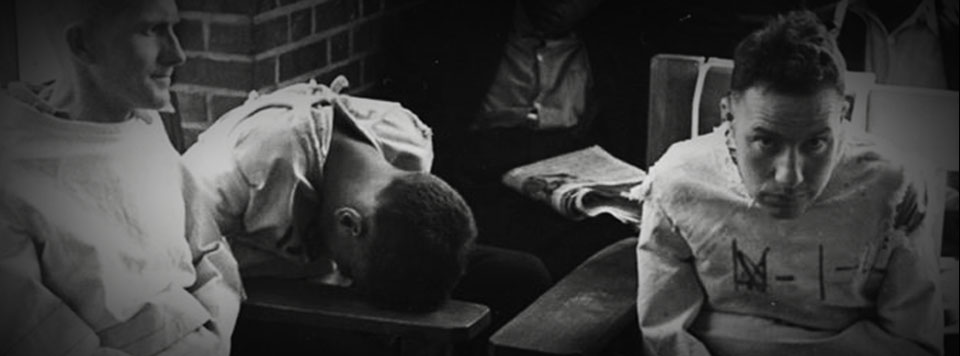The Rosenhan Experiment
2008
The Rosenhan Experiment is a one act opera for countertenor and piano (or countertenor and ensemble, in the 2013 revised version). The piece (subtitled Or, On Being Sane In Insane Places) is based on the famous psychology experiment and paper of the same name by David L. Rosenhan.
Characters
Rosenhan [spoken] and A Patient [sung] (countenor)

About the opera
The “Rosenhan Experiment” was a famous investigation into the validity of psychiatric diagnosis conducted by David Rosenhan in 1972. It was published in the journal Science under the title “On Being Sane In Insane Places” (Science, volume 179, January 1973).
Rosenhan’s study consisted of two parts. The first involved the use of healthy associates or “pseudopatients”, who briefly simulated auditory hallucinations in an attempt to gain admission to psychiatric hospitals in the United States. The second involved asking staff at a psychiatric hospital to detect non-existent “fake” patients. In the first case hospital staff failed to detect a single pseudopatient, in the second the staff falsely detected large numbers of genuine patients as impostors. The study is considered an important and influential critique of psychiatric diagnosis.
The study concluded, “It is clear that we cannot distinguish the sane from the insane in psychiatric hospitals”, and also illustrated the dangers of depersonalisation within psychiatric institutions. It recommended the use of community mental health facilities that concentrated on specific problems and behaviours, rather than psychiatric labels, and also recommended education to make psychiatric workers more aware of the social psychology of their facilities.
My work The Rosenhan Experiment (Or, On Being Sane In Insane Places) takes as a starting point Rosenhan’s famous paper: all the words in this piece are taken directly from the paper, which I have substantially abridged, and occasionally modified (for clarity in performance rather than change in meaning).
The solo countertenor is required to act the parts of Rosenhan and one of his patients, and to speak as well as to sing. Whenever he speaks, his voice is the voice of Rosenhan, and whenever he sings the voice is “The Patient”. Musically, I have treated both parts differently, to highlight the sharp difference between the two. Although he is the only named character, Rosenhan represents the institution, the impersonal, and the “inhuman”. The Patient is the complete opposite: he is not named; he represents the institutionalised, the depersonalised, but also the “human”. We discover aspects of The Patient’s life and his experiences, whereas we discover little about Rosenhan except through his sharp and often amusing prose. The soloist, then, is effectively required to portray a split personality, which is reflected in the staging.
Rosenhan’s experiment gives us pause to reflect on the true nature of “insanity”. Are the insane merely those unfortunate souls that society has confined to the asylum? Is everyone not in an asylum therefore sane? Psychiatric diagnosis and treatment has moved on significantly since Rosenhan’s seminal paper, but in today’s increasingly bizarre and depersonalised world, one can well imagine insisting “no, really, I am not mad!” to incredulous strangers. On the other hand, are we becoming a society in which everyone is “mad” – or at least suffering from some newly-contrived “mental illness”, the treatment for which is the latest wonder-pill from Big Pharma?
Duration
35 minutes
Instrumentation
countertenor, piano (original 2008 version); countertenor, cl, vn, vn, va, vc, cb (2013 version)
First performance
Robert Ogden in the title role with John Reid at the piano, directed by Arne Muus, at The Purcell Room, London, 25th May 2008. The 2013 version was first performed on 28th October 2013, again with Robert Ogden in the title role, at the John Thaw theatre in Manchester (directed by Tim Benjamin).
Video
Request a score / parts
If you would like to see a score and/or require a set of parts for this music, please contact me.